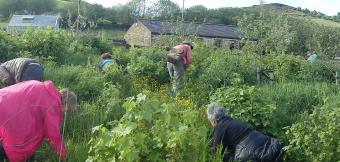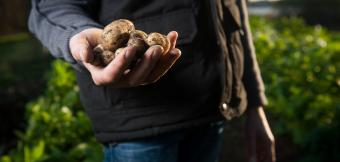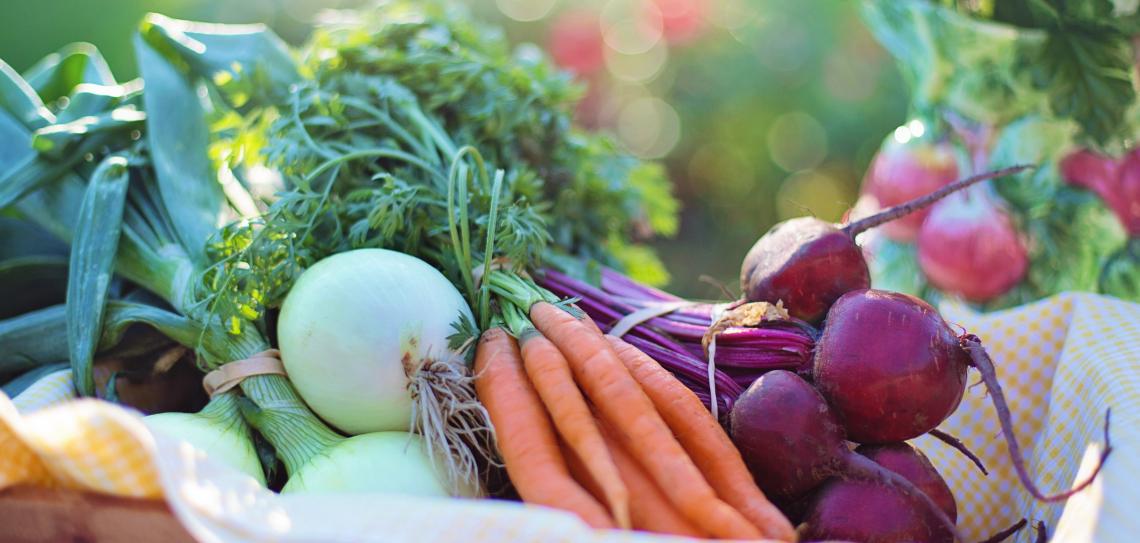
Eat local, seasonal food
Food transport, packaging and processing make up 6% of CO2e emissions from rich countries. Local, seasonal food means lower emissions, so find a source near to home - a farmers’ market, community supported agriculture or your garden. Avoid air-freighted fruit and veg; use frozen or tinned instead.
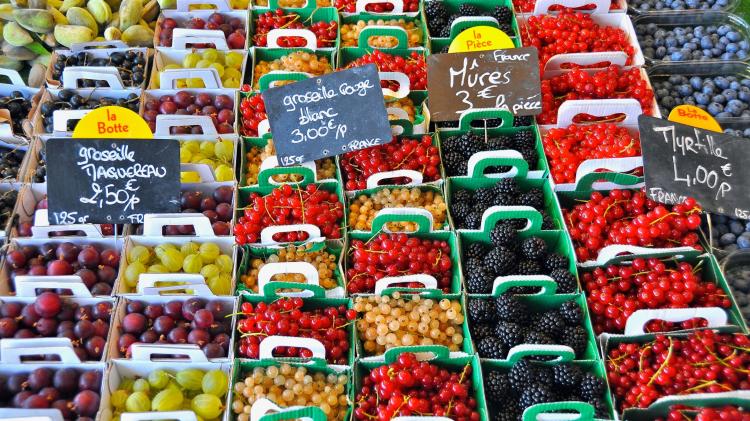
Eat local food
Food production contributes around a fifth of CO2e emissions from wealthy nations. Locally grown food reduces this. Taking the UK as an example (source):
Transport: 12% of food emissions. Local food has travelled a much shorter distance than supermarket food.
Packaging: 7% of food emissions. Local food generally has a lot less packaging.
Processing: 12% of food emissions. Generally, the more ingredients the higher the emissions. Cook meals from scratch if you can.
Growing: 45% of food emissions. Here, eating local doesn’t make much difference. You need to eat seasonally as well – the way we all did 40 years ago.
NB: The remaining 23% comes from home cooking, catering and retail activity.
Eat seasonal food
Here’s the carbon footprint of 1 KG of tomatoes in the UK:
-
0.4kg CO2e - Organic, grown locally outdoors in July
-
1.2kg CO2e - Canned tomatoes
-
9.1kg CO2e - Average tomatoes in a supermarket
-
50kg CO2e - Organic, on the vine, commercially grown in a local greenhouse in March
So tomatoes can be both very low carbon and very high carbon; it’s all about the source and the season. Learn what is seasonal where you live, and get used to a varied, seasonal, home cooked diet. Getting a good seasonal cookbook can really help.
Grow your own
Home grown fruit and veg is both local and seasonal. It will reduce pesticide use, save you money, allow you to make and use your own compost, boost biodiversity and make your garden beautiful.
And gardening itself is good for you: it increases your physical activity, provides a new appreciation for nature, gives you the opportunity to give to neighbours or the local food bank, creates memories with your children and will lead to new skills and interests.
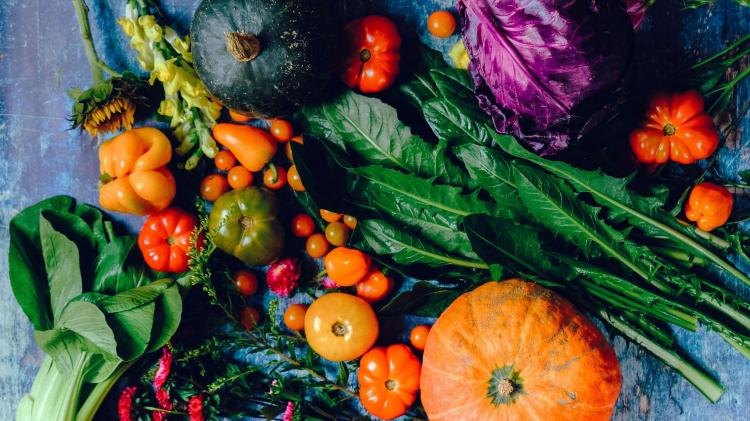
Eat food from low carbon farming
Many people associate organic growing with lower carbon emissions. In fact for most foods there isn’t much difference, though organic fruit and pulses are better. Transport, processing, and the type of food you eat have a much bigger impact on emissions than choosing organic.
However, the way your food is grown does matter for climate change. Low carbon farming builds soil carbon, includes mature trees, manages animals carefully, and reduces pesticides. The best way to find a low carbon grower is to build a personal relationship through a Community Supported Agriculture scheme, a farmer’s market, or simply by growing your own.
BUT, sometimes eat non-local, non-seasonal food
The book How Bad are Bananas debunks the myth that imported bananas are a high carbon food. They are easy to grow, easy to store and easy to ship so are actually low carbon. Here’s the carbon footprint for 50 calories of common foods:
-
65g CO2e from bananas
-
90g CO2e from cereal with milk
-
250g CO2e from cheese burgers
-
2800g CO2e from air freighted asparagus
Another source of non-local, non-seasonal but low carbon food is canned and frozen fruit and veg. Both have some emissions from packaging, transport and storage, but they are always grown in season. For half of the year canned tomatoes will have a fraction of the emissions of fresh ones, ditto frozen peas.
Never eat air freighted food
For the climate, air freighted food is a disaster. The CO2e emissions of transporting one ton of food for one mile is roughly: 25g by train, 48g by boat, 297g by lorry and 1527g by plane. In this sense, the whole food miles concept is misplaced; what matters is how our food is transported, not necessarily how far.
Picture credits: 1) pixabay on pexels.com https://www.pexels.com/photo/agriculture-basket-beets-bokeh-533360/
Buy and use a local, seasonal cookbook
Stop buying air freighted fruit and vegetables
Join a Community Supported Agriculture or box scheme
Write to local supermarkets requesting clear labelling of air-freighted produce and/or carbon emissions

